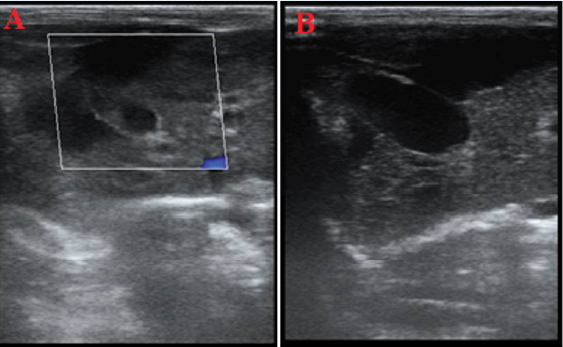Tamoxifen-Induced Fatty Liver is Observed in New Zealand White Rabbit by Ultrasonography
DOI:
https://doi.org/10.15419/bmrat.v10i12.849Keywords:
Tamoxifen, fatty liver, cancer, rabbitsAbstract
Introduction: Tamoxifen is a chemotherapy drug used in cancer treatment. In addition to its anticancer effect, tamoxifen also has hepatotoxic effects. This study aims to evaluate the induction effect of tamoxifen in the development of fatty liver in New Zealand white rabbits by employing ultrasonography.
Methods: Twenty female, adult New Zealand rabbits with a weight range of 1.5–2.5 kg and ages of 8–14 months were obtained from the Pasteur Institute in Tehran. After the adaptation period, the rabbits were randomly divided into four groups with 5 rabbits each. The first group, as a control group, received distilled water during the study period, and the other three groups received tamoxifen orally with daily doses of 1, 2, and 3 mg/kg body weight for 7 days. After 7 days of drug administration, a blood sample was taken from the middle ear artery of the rabbits to examine the serum levels of liver enzymes and assess several blood parameters. For liver imaging, a Mindray Z5 ultrasound machine with 5 MHz frequency and a linear probe was used to check the brightness of the liver before drug administration and 7 days after the final administration (i.e., day 14).
Results: The results show that tamoxifen dose-dependent dose-dependently caused a significant (p < 0.05) increase in alanine aminotransferase, aspartate aminotransferase, triglycerides, and low-density lipoprotein enzymes, and the amounts of high-density lipoprotein and alkaline phosphatase decreased significantly (p < 0.05). It should be noted that cholesterol changes were not significant (p > 0.05). From ultrasound imaging, tamoxifen changes the appearance of the liver from hyperechoic to hypoechoic.
Conclusions: The results show that oral administration of tamoxifen citrate at doses of 1, 2, and 3 mg/kg for 7 days causes liver damage and increases the leakage of liver enzymes and the levels of several blood parameters in New Zealand adult female rabbits, which can be evaluated by ultrasound imaging.

Published
Issue
Section
License
Copyright The Author(s) 2017. This article is published with open access by BioMedPress. This article is distributed under the terms of the Creative Commons Attribution License (CC-BY 4.0) which permits any use, distribution, and reproduction in any medium, provided the original author(s) and the source are credited.
